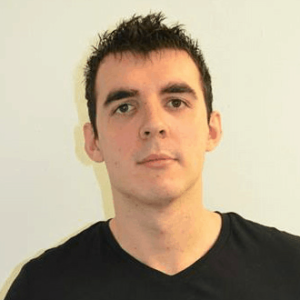Don’t know how to make trance well? Not sure if you should focus on layering, your low-end, or something else?
The world of electronic music production is complex and challenging. So the EDMProd team got in touch with a bunch of professional trance artists and asked if they could share a tip or two.
Here’s what they have to say! 👇
Get the headstart you need in music production with our EDM Starter Kit 🎛️
Get our collection of high-quality presets, samples and PDF guides – suitable for all genres of electronic music 👇
Table of contents
- Stoneface & Terminal – Mixing Tips for Trance
- ReOrder – How to Learn Trance Production
- Cold Rush – Sound Selection in Trance Music
- Airbase – The Power of Listening
- Mohamed Ragab – Sidechaining in Trance Music
- Bjorn Akesson – Organizing Your Music Projects
- Dimension – Trance Production Workflow
- A.R.D.I – Creativity and Originality
- A final word
Stoneface & Terminal – Mixing Tips for Trance

Tip #1: Demos
Do not send out demos of unfinished tracks, even if you think your new idea is the next big thang. Better save & close the project and load it again after one or two days.
Mostly you will hear something that you want to change. Then finish it and wait one day before you send it to labels.
Tip #2: Speaker volume
Keep the volume of your speakers on a lower level while you’re producing. A bad production won’t get better if you just turn up the volume.
Tip #3: Action
Learning by doing! If you really want to make music, you will spend every free minute on your DAW, learning how to produce. Especially when you are under 30 😉 You’re on a good path when nothing is more important for you than making music and when nobody needs to push you to be productive!
Tip #4: Design sounds from scratch
Choose the INIT sound in your synth preset list and play a bit with all the knobs, click through the waveforms etc. and you will slowly but surely understand how to create sounds…
Tip #5: SAVE YOUR PROJECT EVERY 10 MINUTES!
No explanation necessary.
Follow Stoneface & Terminal on Facebook
ReOrder – How to Learn Trance Production

Firstly I would say it is important to produce trance music in your own way – go with your own feelings and don’t try to sound like someone else.
Of course, it is nice to be inspired by someone. But time proves that copycats don’t get anywhere.
If you create something new and you do it right, people will love your music!
For some reason many young and new trance producers aim for achieving fame and completely forget what trance or any music is all about. The best you can do is to stick with your own sound, work on it and focus on every single detail.
If you don’t know how to just check Google, watch tutorials on YouTube, or start attending a course. These days there are so many options for how you can get the basics down in matter of weeks or even days.
Once you understand the basics of composition, arrangement, and some basic chords you are on your way to make your first hit! It doesn’t happen within a day and it is a long journey – but if you work hard you get to your goals eventually.
Cold Rush – Sound Selection in Trance Music
In our experience, the quality of a production mostly comes down to the balance of the mixdown. The sound selection itself is very important even before you start processing the sound.
Simple, but objective EQ and volume adjustments go a long way of balancing sounds into your track (the 80-20 rule was definitely an eye-opening one).
Avoid overprocessing and stacking loads of plugins on top of each other for no reason resulting in noisy overcompressed messes.
Adequate decision-making, comes down to experience after all. Keeping your eyes and ears open to ideas and knowledge is key, and there’s something to learn from everything.
In the end, all your good decisions and your bad decisions add up and it shows in the final result.
The next step in using actual good sounds and making good balance decisions is layering. You pretty much have to layer everything to get a “full”, professional sound these days.
Starting from your kick drum to your percussion, sweeps, pads, leads, and of course your basslines. Our basslines are always layered and to put it simply it goes like this:
- A clean sub bass beneath everything (so around 0-150hz area there is only the clean sub and the kick’s low end competing for space)
- Appropriately EQ’d mid basses, which we use from 2-4 layers depending on tracks.
- To make the bassline really pop, we also use quite heavy acids (layered of course) on top of it all. And this is how you get a classic Cold Rush trance bassline!
Get the headstart you need in music production with our EDM Starter Kit 🎛️
Get our collection of high-quality presets, samples and PDF guides – suitable for all genres of electronic music 👇
Airbase – The Power of Listening
Listen and re-create. The most obvious difference between professional tracks and amateur tracks is the lacking understanding of tension and release.
A track needs to evolve constantly, especially in the build-up and breakdown.
I’m not talking about intro, break, build, climax, and outro – but the individual parts within those sections. The use of effects to build anticipation for change, mix up synth lines, bass lines and drums for short fill-in like sections before looping back into the regular beat.
The best way to approach this is to listen to tracks you really like. Try to focus on specific details at a time. How are FX used, what happens to the drums, are they constant or broken up here and there? You’ll quickly notice that professional tracks most often are constantly evolving. It also minimizes the risk of repetition.
The next step is to re-create it. Try to re-create the song as closely as you can. Every individual part. You don’t have to get it identical (because it’s pretty much impossible), and you don’t have to create the whole song. Just try and see how far you get. You’ll learn tons of new things.
Two specific tips:
#1 – Bass is your enemy
Just like the Highlander movie series, there can be only one.
The low end of the frequency spectrum is incredibly sensitive and gets crowded really fast. You only want the bass of your “bassy” instruments (kick, bassline, perhaps fx), and no bass from anywhere else.
”Duh!” might be your instant response to this. But keep in mind, just about any synth, any loop and any sample contains bass. It can be a little and it can be a lot.
It doesn’t matter if it’s little, cut it away with a highpass of an EQ. Even sounds with little bass will add up if you use many of them, and you don’t want those frequencies to mess with your intended bass. It will make your kick and bassline lose punch. So cut, cut, cut.
Be careful with bassline and kick as well. They are competing in the same frequency range. Some basslines and kicks go well together, but not always. If they don’t play well together, side chain a compressor or a highpass filter on your bassline.
#2 – White noise
If you produce your track and find the climax after the big build-up to miss a little extra energy, you can often save the day by sidechaining a compressor on a track with white noise kicking in on the first beat. It just adds that little extra energy.
Be sure to roll it off slowly so you hardly can tell it’s gone. If you can hear the white noise disappear, the track will lose some energy.
White noise is also a great addition to a muddy bassline, just layer it low.
Note from Sam: Airbase also has a ton of awesome tutorials on his YouTube channel. You can check ’em out here.
Mohamed Ragab – Sidechaining in Trance Music
Advice on Sidechaining:
I hear a lot of producers using only 1 sidechain ratio on all the sounds in their tracks. I would recommend that any producer use 2/3 different sidechain ratios on their tracks so the track can have more dynamics.
Using R Bass:
I have always had this problem with mixing kick & bass together. So one trick I discovered by accident is to not focus much on this. Sub-bass can be added on the mastering stage on the whole track, which means you can have this sub feel on all your low-end frequencies at the mastering stage.
I do this by using R Bass from Waves, but before adding this you must cut the low end from your track. R Bass adds a ‘fake’ bass to your sound, so be careful while using this trick. I use different monitors and headphones to make sure I have added enough bass to the track and not too much.
Follow Mohamed Ragab on Facebook
Bjorn Akesson – Organizing Your Music Projects
“Always make sure that your projects are well organized. Keep tracks properly named, colored, grouped, and make sure to adjust the volume between every plugin you assign to your insert slots.
Having a well-organized project gives you more time to focus on making music and mixing things properly than trying to navigate through a sloppy project file.
Remove unwanted frequencies, especially low ones to create clarity and headroom in your mix, even the innocent hi-hat samples in packs can contain unwanted low frequencies that only bring your mix down.
Fatten-up sounds and always look at the bigger picture, it takes a lot of time, but you’ll get there.
Don’t stress, you can always fix your track and make it better.“
Follow Bjorn Akesson on Facebook.
Dimension – Trance Production Workflow
Tip #1: Ideas
For me, everything works much better when you have an idea in your head before you start on a new project, even though later on the idea will probably not be completely how you had imagined as new ideas always come up in a creative process.
It’s also very important to me to have patience because sometimes the perfect melody comes very easily to you, and sometimes it takes a week or even a month of playing around before nailing it. It’s all about being in the studio at the right moment.
Another thing that is really important to me is to know that not all the elements of the track you’re creating are definitive. You can love a specific sound so much but maybe it just doesn’t fit on that specific track, and this situation will block your creativity if you force to use in it your tune. Sometimes you can change that sound and everything starts to run.
And the last important thing to have a nice workflow is to always have a good order in your project. If your project is chaos this will affect your creativity for sure because you can’t see easily what things you’re using or what you have in place already. If you have everything ordered by colors, for example, you can easily recognize all the elements of a song and maintain the overview.
Tip #2: Bassline Spectrum
When creating basslines, I’m always checking the spectrum.
Fabfilter Pro-Q is really comfortable for this because you can cut frequencies at the same time that you are seeing what’s happening. I always try to reserve a place in the spectrum for every sound, especially with low-frequency sounds which are the most difficult to control.
For example, if we have two basslines (sub + bass) I will cut the bass enough to make sure that both sounds aren’t playing in the same place in the spectrum. This way the sub will have its own place and everything will be better in the final mixdown.
It’s also really important to layer two sounds that are compatible naturally without forcing both sounds a lot. I feel that not every sound is 100% suitable, and for me, perfection comes when you are layering two sounds that together sound almost perfect with any kind of EQ.
A.R.D.I – Creativity and Originality

1. Learn from the best. Don’t be afraid to deeply analyze different tracks in case of mixing, but also remember to try to find your own style in music.
2. Don’t use one template to produce all your tracks, be creative.
3. Follow only justified opinions about your compositions. Remember that if, for example, someone says your bass is weak and you should replace it, it doesn’t necessarily mean it. Don’t be scared to ask for advice your favorite producers (but don’t spam them with your unfinished demos every day).
4. Reach perfection in mixing and quality of your sound but remember that the key is your emotions and creativity. Music is art, not your job.
5. Create the music that you love.
Get the headstart you need in music production with our EDM Starter Kit 🎛️
Get our collection of high-quality presets, samples and PDF guides – suitable for all genres of electronic music 👇
A final word
There you have it. Killer advice from 7 brilliant artists on how to make trance.
But it doesn’t mean anything if you don’t put it into action, so make a commitment to use at least one of these tips in your current or next project.






